Art World
Despite Economic Woes (and Criticism Over the Cost), a $60 Million Museum Called the Box Is Opening Next Week in Plymouth
It features an exhibition on the Mayflower, stained glass by Leonor Antunes, and a "floating treasure box" design.
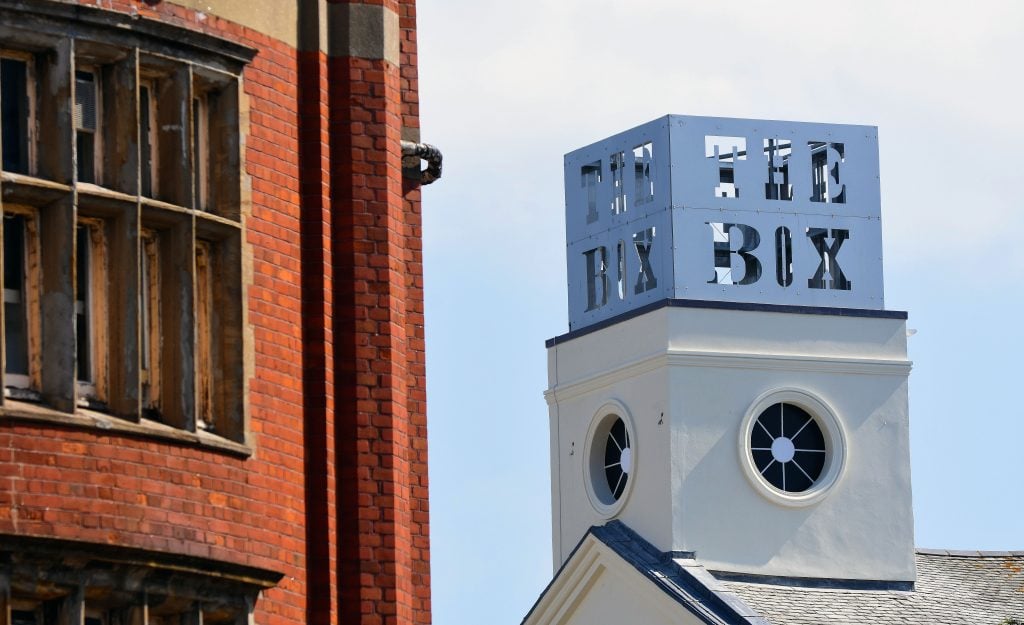
It features an exhibition on the Mayflower, stained glass by Leonor Antunes, and a "floating treasure box" design.

Naomi Rea

Despite the economic turmoil caused by the pandemic, the UK is opening a shiny new £47 million ($60 million) museum in Plymouth. The Box opens to the public in the Southwest English port city on September 29—the largest arts and heritage museum to open in the UK this year (though, to be fair, given the circumstances, this may not be much of a boast).
The city has combined its former City Museum and Art Gallery, Central Library buildings, and St. Luke’s Church to create the new cultural center. Funded by the Plymouth City Council, National Lottery Heritage Fund, and Arts Council England, among others, the Box includes 13 new galleries and exhibition spaces.
The structure is topped off with a flashy extension to house the museum’s archives. This has been created to look like a “floating treasure box,” though some early reviews have deemed it “clumsy.”
The Box’s original opening date in May was postponed due to the pandemic. Paul Brookes, the museum’s chief executive officer, tells Artnet News that the delays to construction and completion due to COVID-19 set the project back by more than £600,000 ($764,000). The museum also estimates lost income over this financial year—from both earned income and from sponsors—to be in excess of £900,000 ($1.1 million).
Nevertheless, Brookes is optimistic about the project. Despite the setbacks, it has been able to keep on all of its staff, and has been recruiting and training new front of house staff ahead of the big opening. Brookes says he hopes it brings a “huge amount of pride and excitement” to the Plymouth community.
“It’s important that people feel proud of where they live and work—especially at a time when traveling anywhere else is so problematic—and we hope the Box has made a difference to this,” Brookes says. “It’s a symbol of Plymouth’s ambition.”
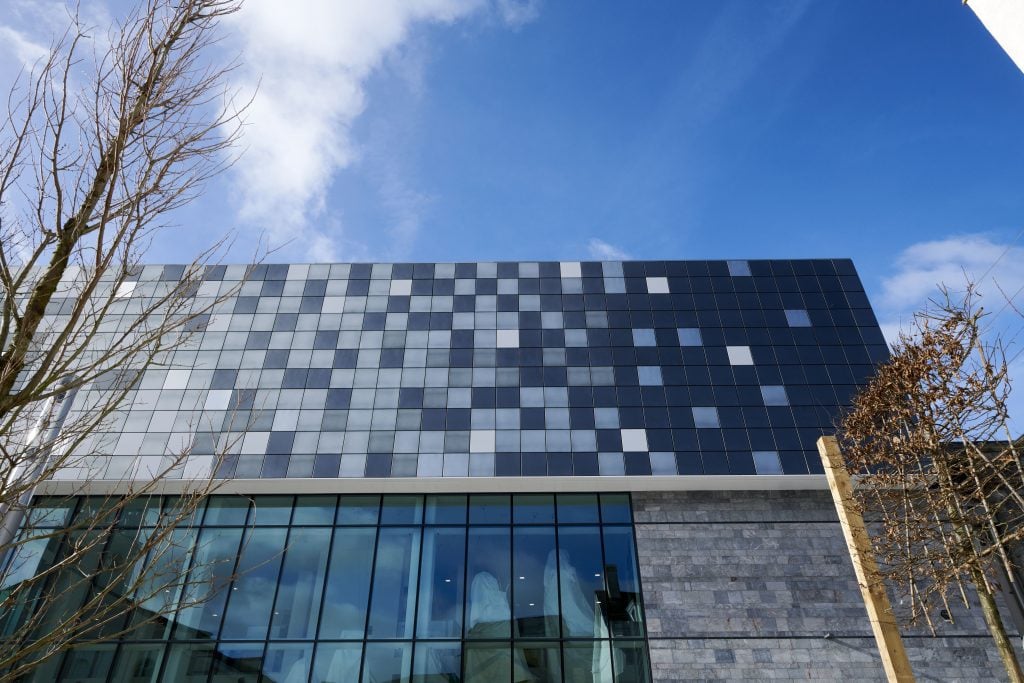
The Box, Plymouth. Photo by Paul White Photography. Courtesy The Box, Plymouth.
He also hopes the project will tangibly boost the local economy. The construction of the museum supported 447 full-time contractor jobs, and the finished venue now employs 72 full-time workers, who are supported by more than 120 volunteers. “Once the visitor economy returns to normal levels, it’s estimated the Box will support a further 363 [full time] jobs in the wider Plymouth economy,” Brookes says.
The museum has also attracted a further £2 million ($2.5 million) a year of direct investment in the project from outside sources.
Before the crisis, the museum had forecast 350,000 visitors in its first year followed by a sustainable number of 250,000 visitors a year, which would have generated some £16 million ($20 million) a year for the local visitor economy. It is now modeling 25 percent of the estimated visitors in the next six months, then 50 percent for 2021 and 2022.
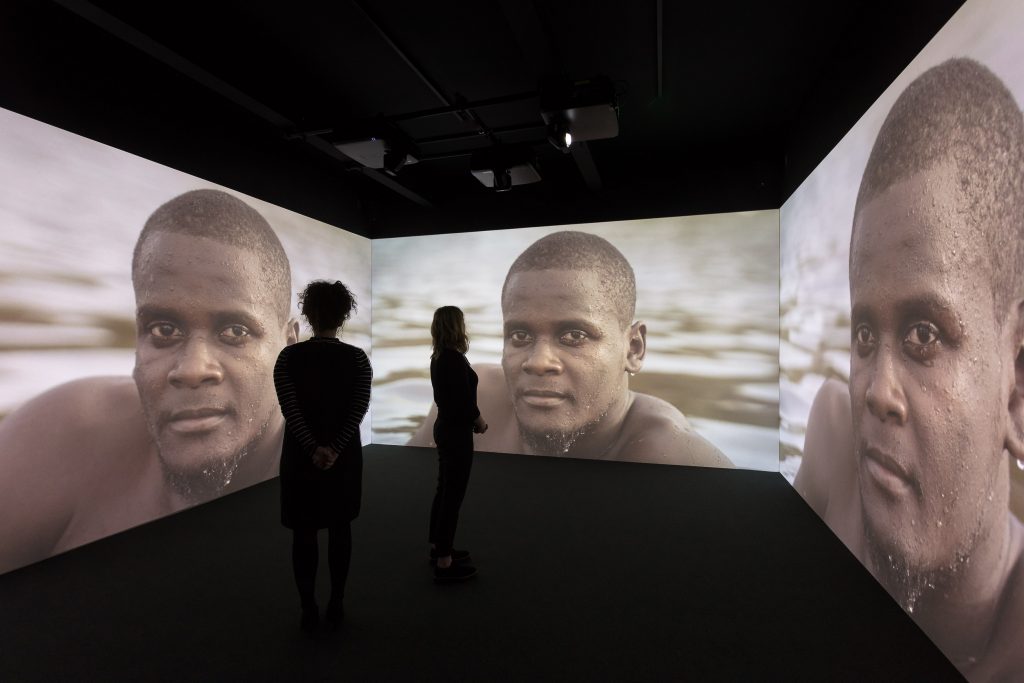
Kehinde Wiley, Narrenschiff (Ship of Fools) (2017). Courtesy The Box Plymouth.
The museum opens next Tuesday with 12 different exhibitions including a contemporary art show called “Making It,” showcasing the work of six contemporary international artists across four different spaces. It includes work by the US artist Kehinde Wiley, whose three-channel video installation Narrenschiff (Ship of Fools) reflects on centuries of systems of prejudice that have barred opportunities and marginalized people’s achievements because of their race.
As part of the exhibition, the Portuguese artist Leonor Antunes has been commissioned to install a permanent work in St Luke’s, a wavy stained glass window. The show also includes a permanent public sculpture by Antony Gormley, a wistful figure made of 22 cast iron blocks that has been installed on the pier.
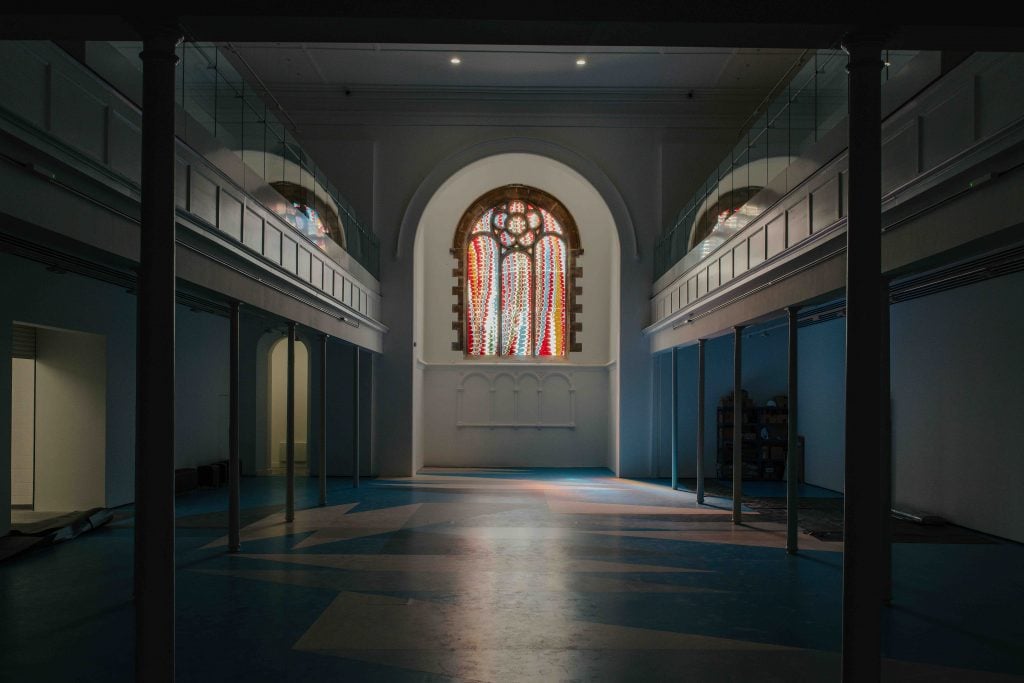
Leonor Antunes’s fused-glass window in St Lukes. Courtesy The Box, Plymouth.
Titled Look II, the work has proved somewhat divisive among the locals after the city declined to reveal the cost of the sculpture. Gormley was heckled during a TV interview yesterday, with one local deeming it a “waste of money.”
Despite these criticisms, Nigel Hurst, head of contemporary art (and former chief executive officer of Saatchi Gallery) says that there is a local appetite for contemporary art. “Now more than ever we need creative people to help reinforce the difference between living and existing, and the curiosity shown by our visitors to date around the new art on display is heart-warming,” Hurst says.
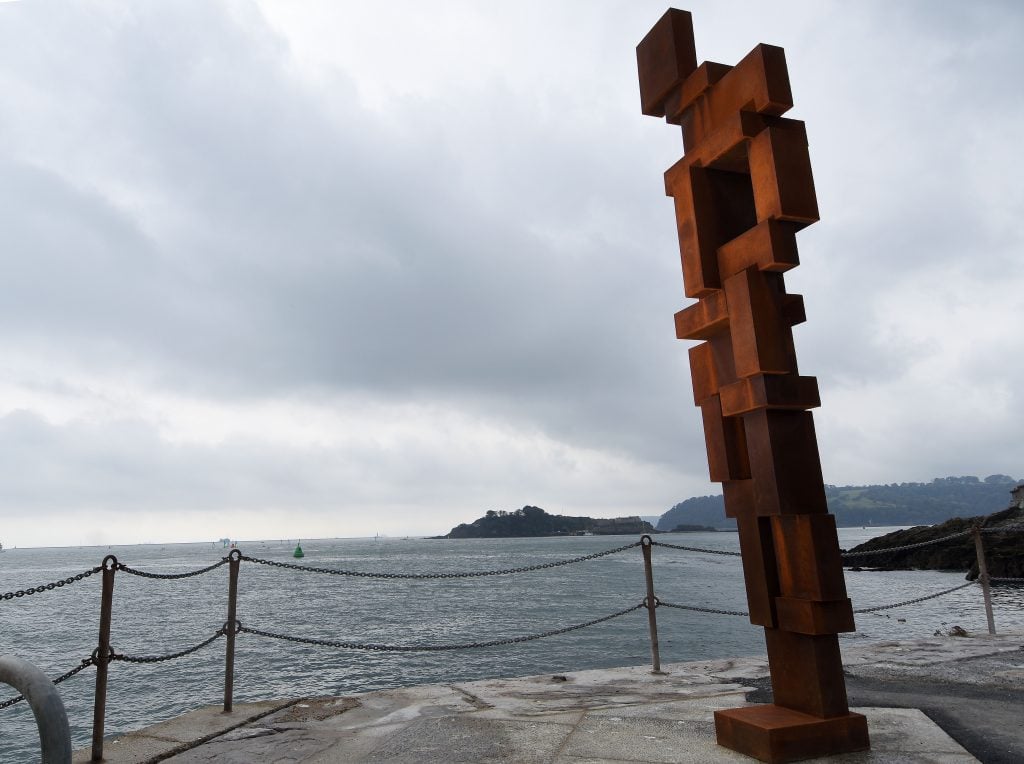
Antony Gormley, Look II(2020). Photo by Wayne Perry. Courtesy The Box, Plymouth.
Other exhibitions include a commemorative exhibition on the 400th anniversary of the Mayflower, the ship that set sail from Plymouth to America in 1620. Tribal scholars in the US from the Wampanoag Native American Advisory Committee have worked with the curators to present a Native American perspective on English colonization, and its impact on the Indigenous population.
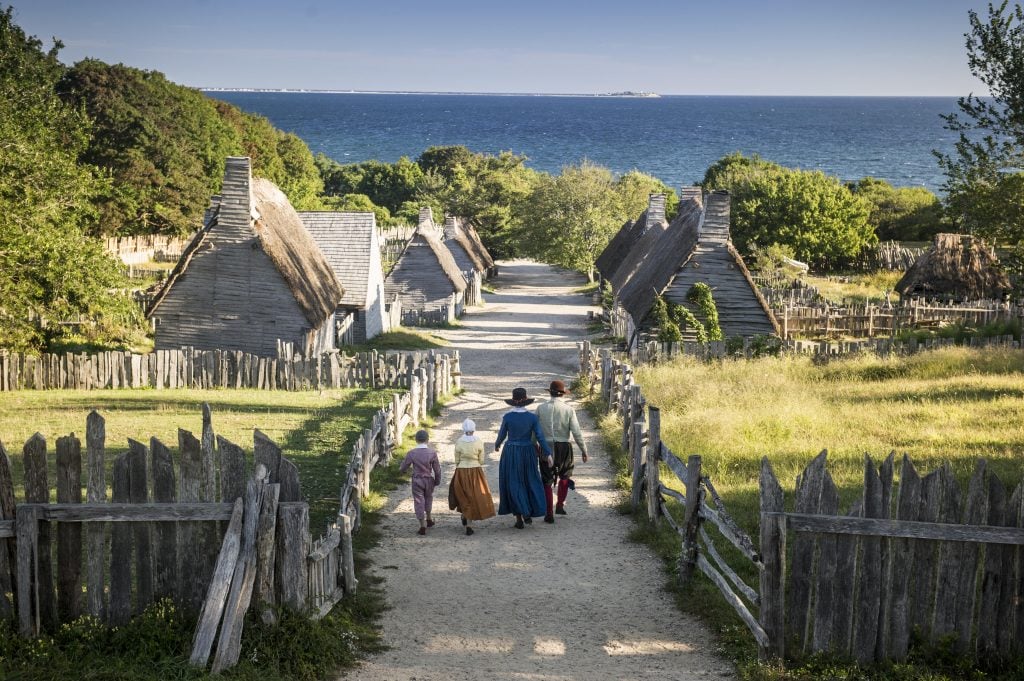
Image of Plimoth Plantation in Massachusetts, included in “Mayflower 400: Legend and Legacy” at The Box, Plymouth. Courtesy The Box, Plymouth.
Called “Mayflower 400: Legend and Legacy,” the show will offer a view of Native American lives before and after the Mayflower. It includes more than 300 modern and historical objects, and loans from 100 museums, libraries, and archives all over the world including the National Museum of the American Indian and the Harvard Peabody collection. The Box has also commissioned a new Wampanoag object, for the show by the artist Nosapocket / Ramona Peters.
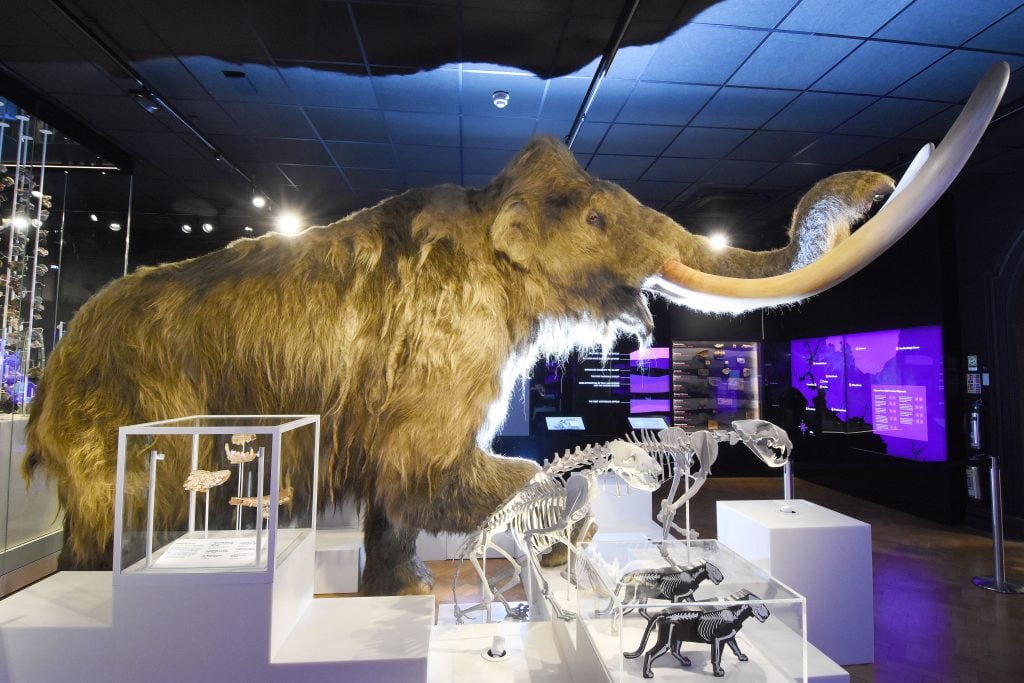
The Box, Plymouth. Photo by Wayne Perry. Courtesy The Box, Plymouth.
The museum also has a number of permanent displays including a set of 14 newly-conserved 19th century ships’ figureheads hanging in the main glass atrium, and a life-size woolly mammoth replica in its natural history gallery.
As is standard these days, social distancing will be in place and visitors must book tickets ahead of their visit. Capacity is set at 900 people a day, and access to the museum is free apart from the “Mayflower 400” exhibition, which will cost £5 ($6) for non-Plymouth residents.
See more images of the Box below.
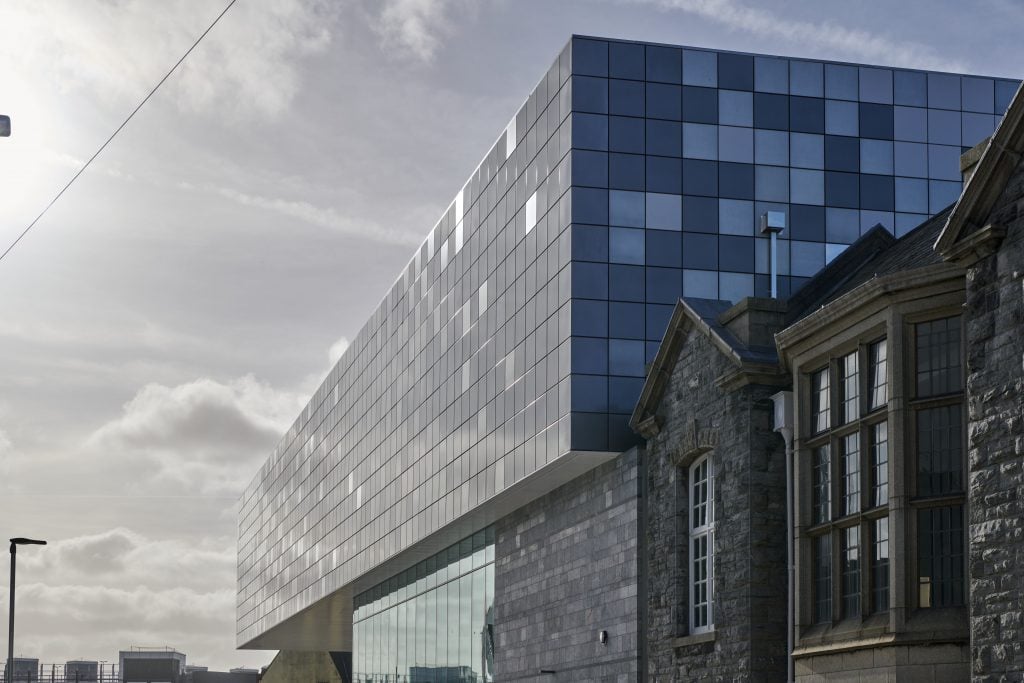
The Box, Plymouth. Photo by Paul White Photography. Courtesy The Box, Plymouth.
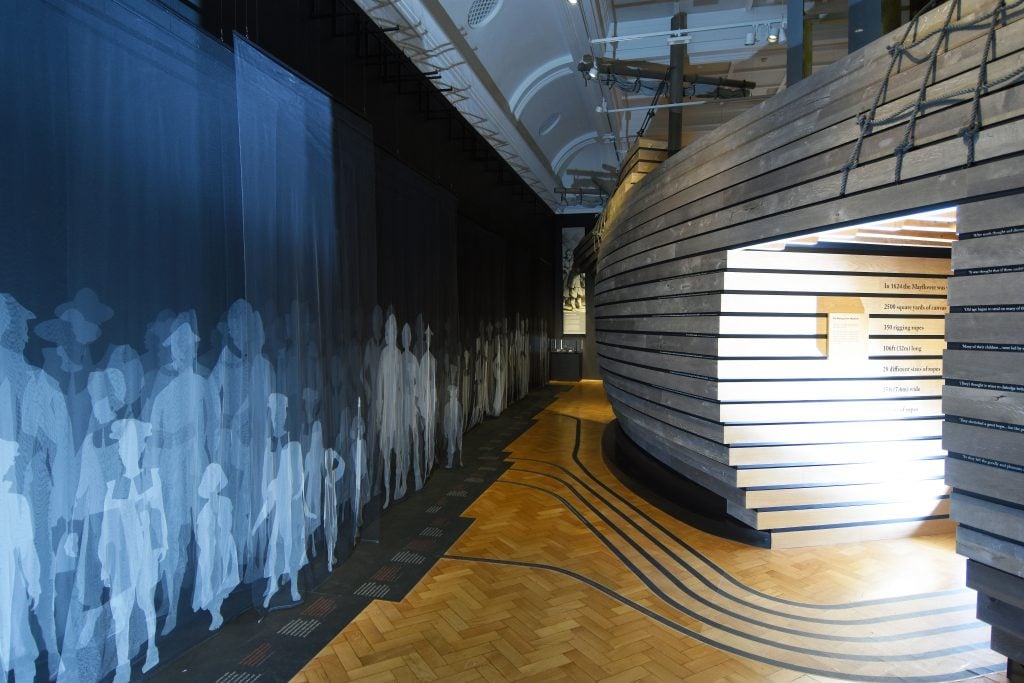
The Box, Plymouth. Photo by Wayne Perry. Courtesy The Box, Plymouth.
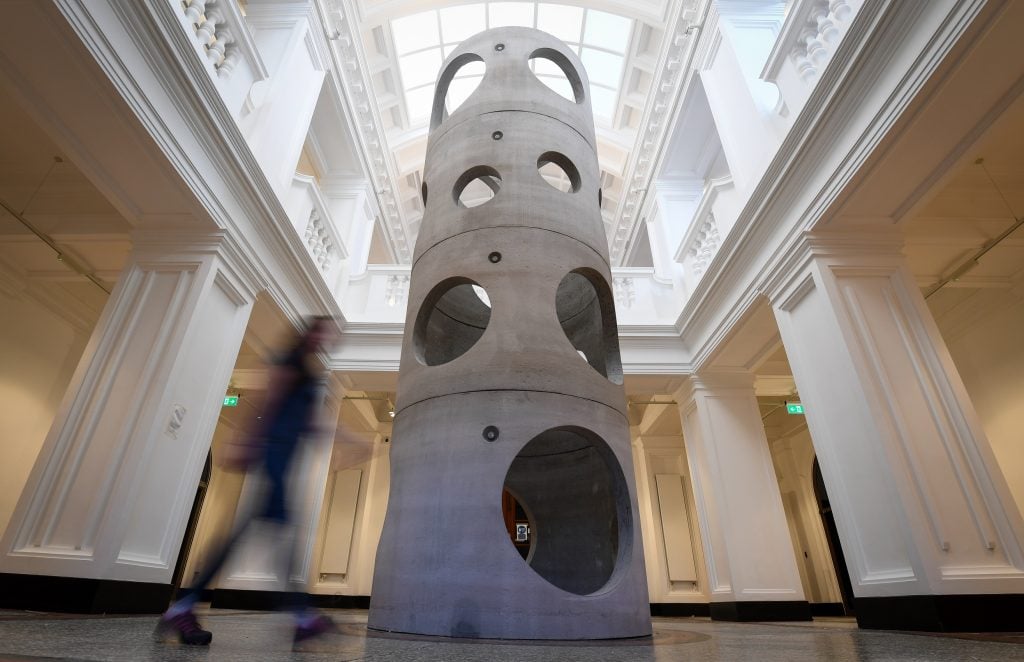
Alexandre Da Cunha’s Figurehead II in the North Hall of The Box. Photo by Finnbarr Webster/The Box/Getty Images. Courtesy The Box, Plymouth.
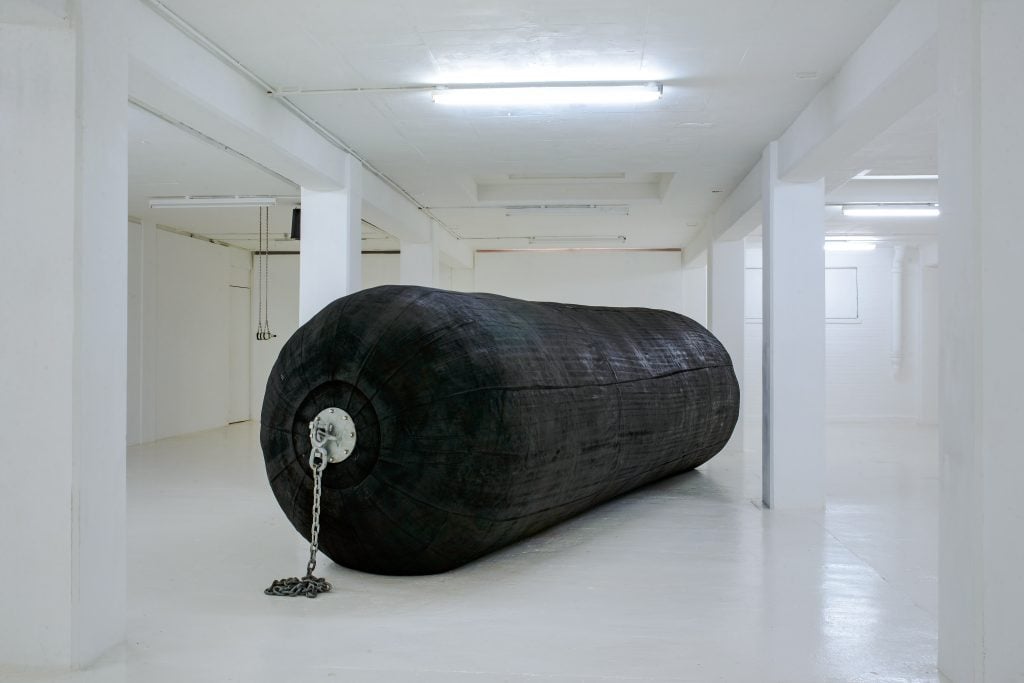
Eva Grubinger, Fender (2015). Karst Plymouth. Copyright Dom Moore.